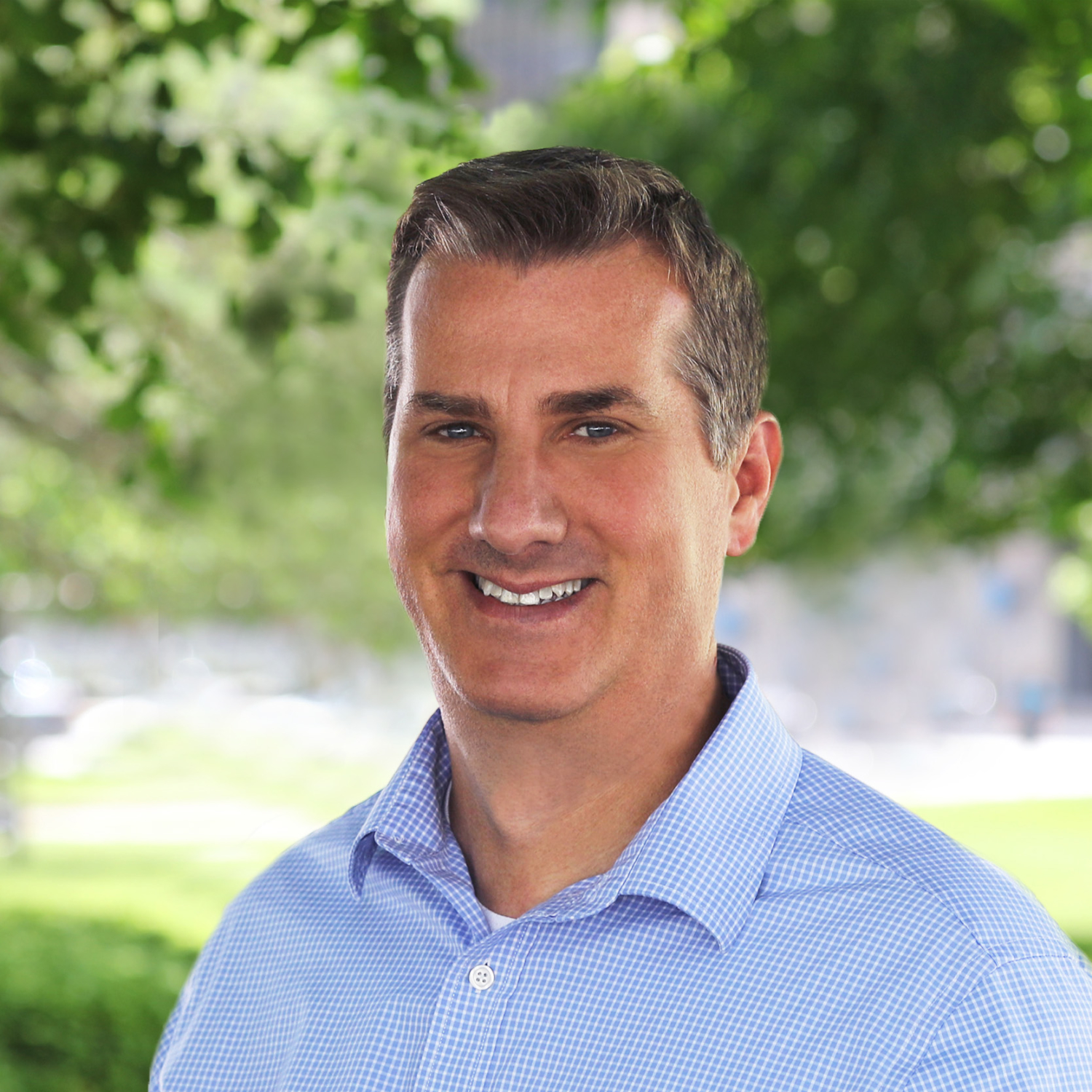SURVEY: Private School Response to COVID-19
America’s K–12 schools have undergone a massive shift over the past two months because of the COVID-19 pandemic. Schools, teachers and students are doing many things today that they were not doing—or even planning for—on March 1.
So far, a lot has been written, webinar-ed and Zoomed during this time. To keep up with the rapidly evolving developments and schooling environments, some news organizations and think tanks have been doing timely and useful tracking and database-building.
For example, see the ongoing tracking and databases maintained by Education Week and the Center for Reinventing Public Education (CRPE). There is no doubt we are in an unprecedented time that’s causing systemic and structural shocks to the nation’s public schools. Nat Malkus and Cody Christensen at the American Enterprise Institute (AEI) continue to survey public schools about their responses to the pandemic.
But what do we know about how the pandemic is affecting our private schools, and their families, students and educators? Private schools educate roughly 10 percent of our student population; about one out of four American K–12 elementary and secondary schools are private schools. Until now, we have mostly heard anecdotal stories about the effect of COVID-19 on their operation.
In early April we set out to better understand how the country’s private schools were managing in this crisis. EdChoice partnered with Hanover Research, and we surveyed private schools across the nation to find out how they’ve responded to the pandemic, what they’re most worried about and what the future holds. We received responses from 771 private schools from nearly every state, including more than 200 schools from the state of Florida.
You can read Hanover’s report describing the findings and methods here.
We are also grateful for the support and cooperation of organizations willing to endorse this project and disseminate the survey link to private school leaders, including: Council for American Private Education (CAPE), National Catholic Educational Association (NCEA), Christian Schools International (CSI), and Step Up for Students.
Our key takeaways right now:
Private schools largely lacked experience to prepare for the move from in-person learning to remote learning. But they appear to have adjusted quickly to the pandemic and are now using a variety of online platforms to deliver educational material to students:
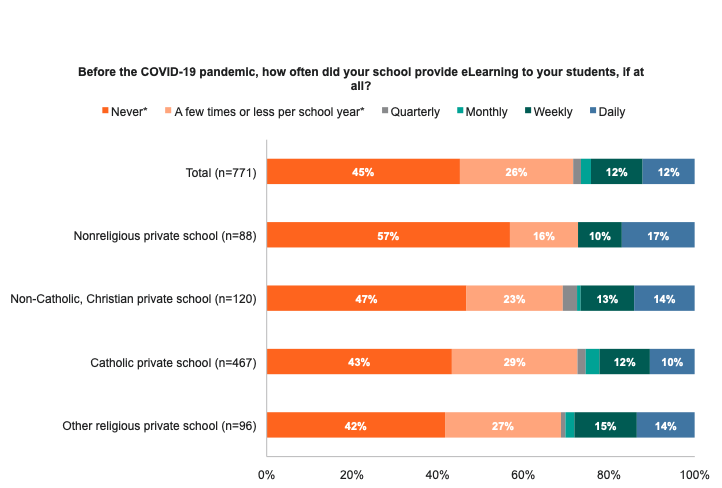
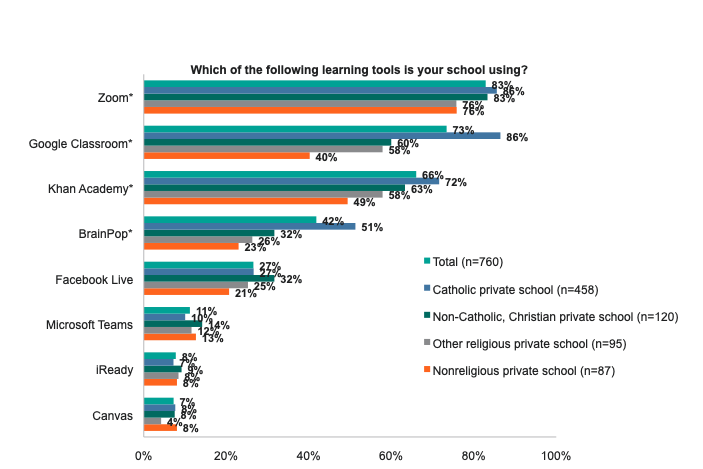
Teachers are still teaching. In fact, when the survey wrapped up by April 17, almost two-thirds of teachers were working full-time remotely.
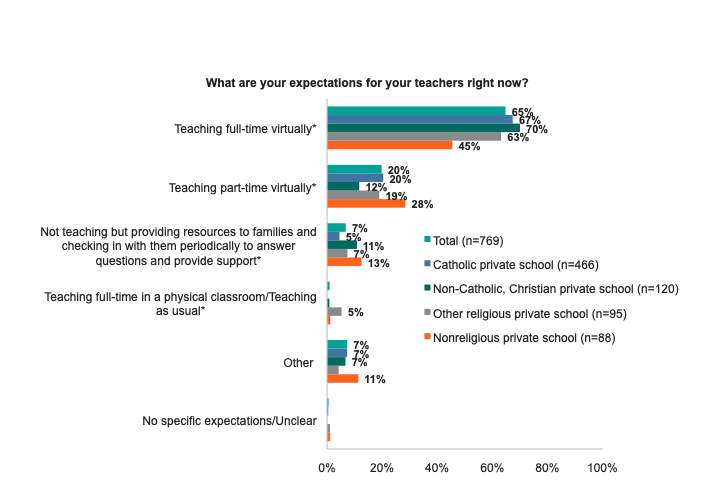
Private schools are communicating a lot with their families. As we’ve seen in prior parent satisfaction research, this is an area where private schools often receive high marks, and they continue to excel at staying in touch with parents during the pandemic. Eighty-five percent of schools reported communicating multiple times per week or more.
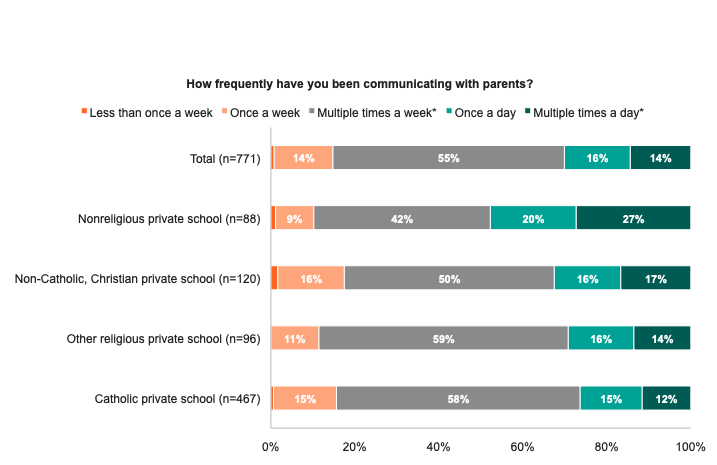
To learn more about how private schools are responding in the wake of this pandemic, read through the full report from Hanover Research here.
Think we missed something? Or do you have questions about this survey?
Feel free to send me an email at paul@edchoice.org.


